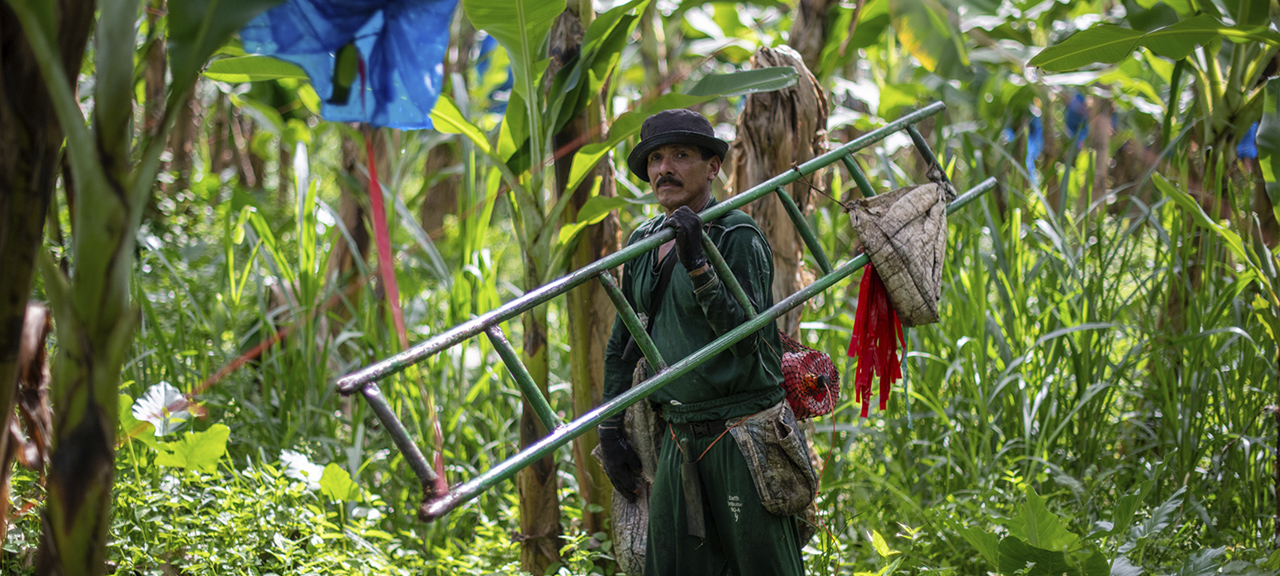In the 1980s, EARTH was born as a project with a powerful vision and a promise for the future. At the time, the property acquired to build the Guácimo Campus already had a commercial banana farm, a common crop on the Costa Rican Caribbean lowlands—and an area that had historically been culturally, economically and environmentally shaped by the industry.
Instead of shutting down the farm, EARTH’s founders chose to make it part of a comprehensive project that would break paradigms and open new opportunities for development at both the local and international levels. Nearly 40 years later, the EARTH Banana Commercial Operation keeps being a pioneer in innovative agricultural practices designed, above all, to protect natural resources, promote biodiversity, and ensure the health of the ecosystem. This operation is part of EARTH Ventures, the University’s business division, where institutional values are brought to life and where its profits contribute to student scholarships and other operational needs.
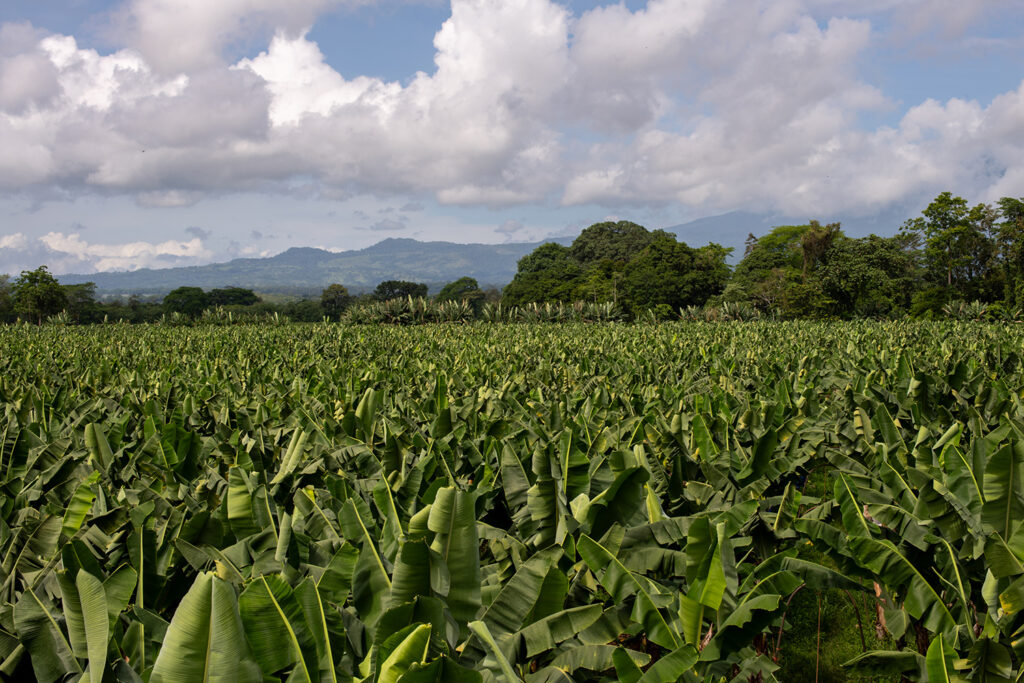
Thanks to a partnership with Whole Foods Market that has lasted for over 20 years, the Banana Commercial Operation has grown into an example of a responsible business. It currently holds several certifications, including Rainforest Alliance, Sourced for Good, and Global GAP. In 2020, the Commercial Operation joined a group of sustainable banana farms in a project led by EDEKA, Germany’s largest supermarket chain (and already a buyer of EARTH bananas), and the World Wildlife Fund (WWF). Through this initiative, project managers provide ongoing support to help member farms implement more sustainable practices and analyze their decision-making processes that ultimately allows them to offer realistic solutions that respond to market demands.
The EDEKA-WWF project focuses on a 95-hectare area known as Block 4, which represents 22% of EARTH’s total banana farm area. “WWF didn’t want to just give another certification. They wanted a living tool—something that could evolve, self-correct, and demonstrate with data that things can be done better,” explains Adrián Jiménez, Commercial Crops Manager. After a process of preparation, validation, and technical reviews, EARTH became the first banana farm in Costa Rica to be certified by WWF under this model. The export of fruit produced under these conditions began in November 2022.
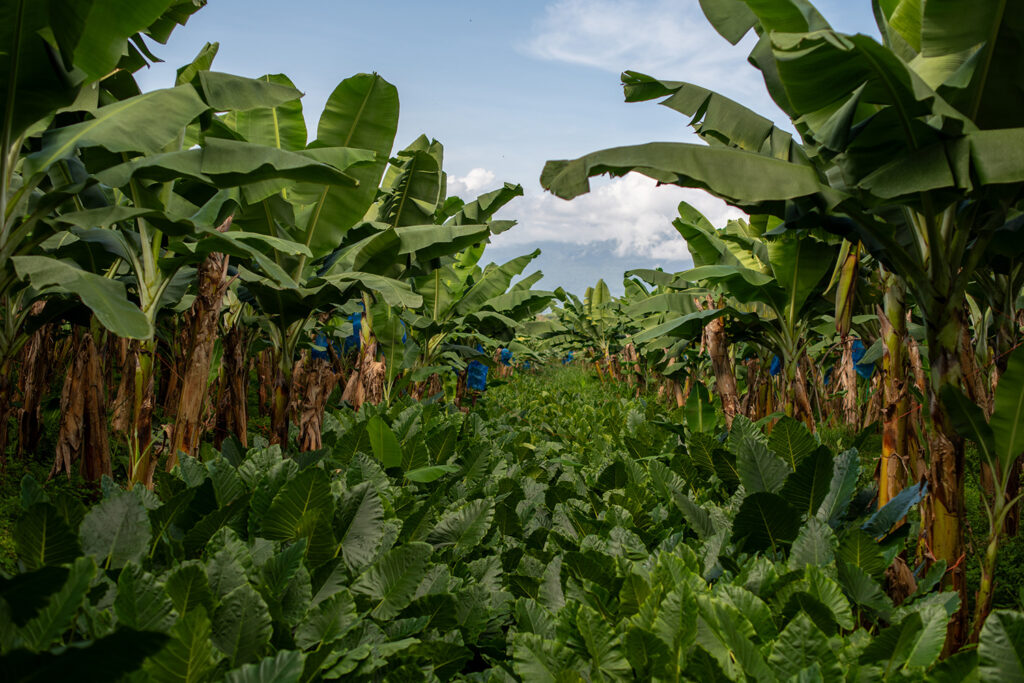
Among the most significant transformations on the farm is the total elimination of herbicides. Instead of applying chemicals to remove unwanted vegetation, the farm now encourages the growth of live cover with beneficial wild plants that help protect and enrich the soil. This approach has also been applied to drainage channels, which are now fully vegetated to prevent chemical residues from reaching waterways.
Reducing chemical inputs has been a priority for all the organizations involved. Since 2021, the farm has stopped using red- or yellow-label products for nematode (plant parasites) control, replacing them with alternatives such as cinnamon extract, chitin, and other biological products. In addition, a gradual fungicide reduction program has been implemented to manage Sigatoka, a common banana disease. At the packing plant, the focus is on improving water efficiency, with yearly targets to reduce the amount of water used per kilogram of processed bananas.
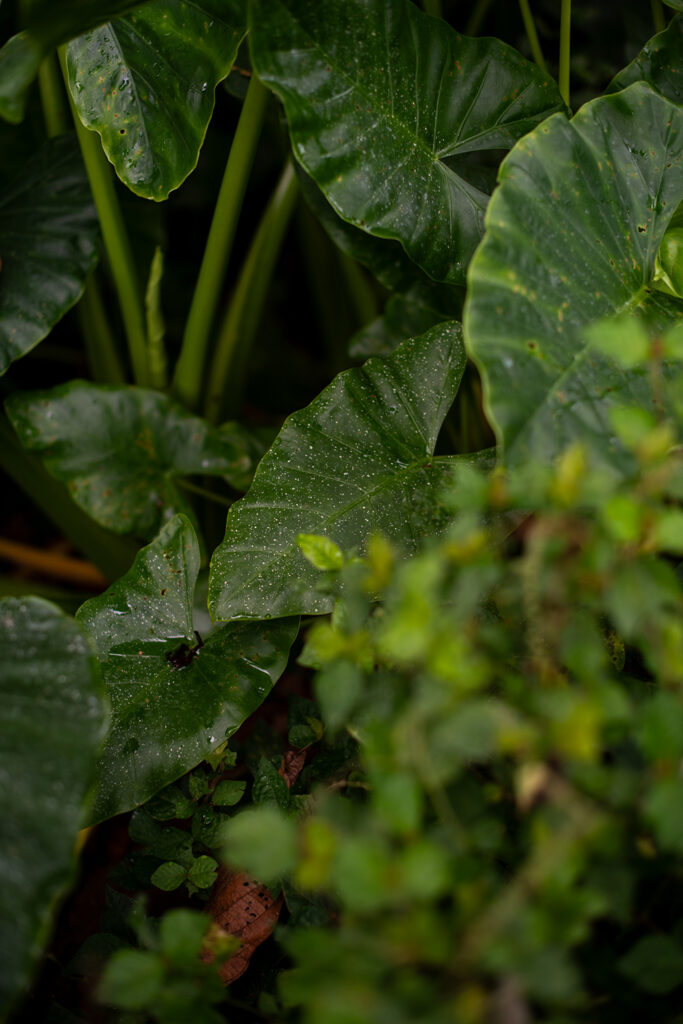
As with many regenerative and sustainable practices, the results are not immediate—but the early signs are encouraging. During drought periods, for example, soils covered with vegetation retain far more moisture than exposed soils. When the cover is removed, the ground underneath is still damp and teeming with microorganisms.
“This isn’t conventional agriculture, where you apply something and get an instant response. This is a different logic—one of restoring soil balance so life can thrive again, leading to healthier, more resilient production,” says Jiménez.
Although the full impact of these actions will be seen in the medium and long term, WWF’s team of scientists is already analyzing biodiversity to identify so-called “indicator species” such as birds, fish, amphibians, and certain types of insects and mammals.
The presence of these species in the plantation is a sign of ecosystem health. This baseline will allow for future comparisons and help assess whether agricultural practices have supported biodiversity growth. At the same time, the team is developing a methodology to measure soil carbon capture, a key indicator in the fight against climate change.
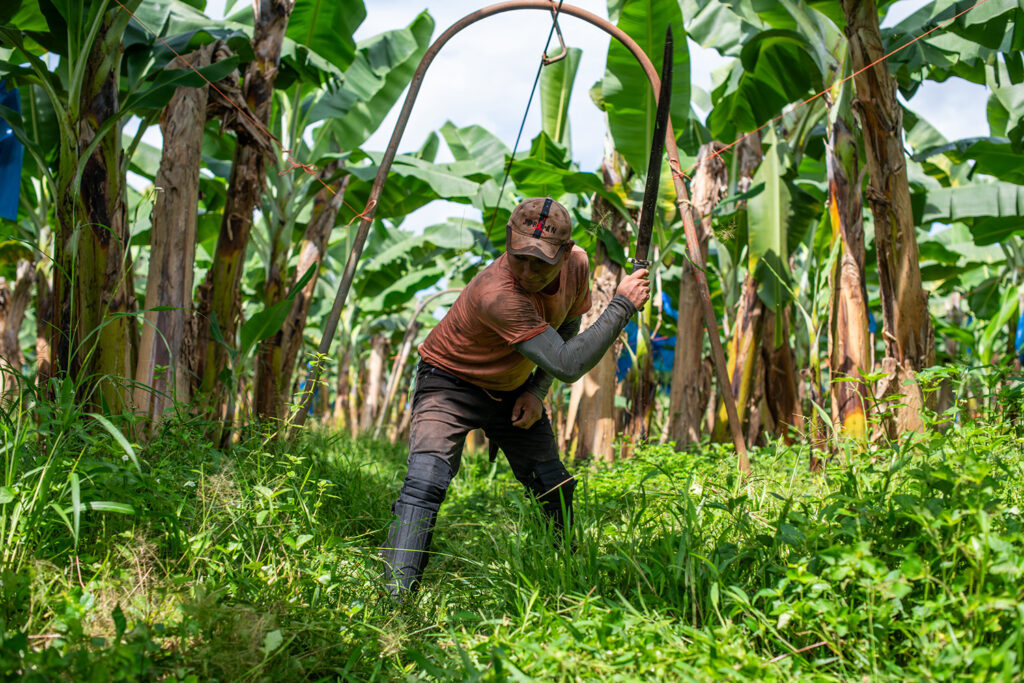
On the table lies a plan and a dream that this model will expand to other blocks of the farm, and for EARTH to continue serving as a role model—inviting others in the banana industry to visit, learn, and apply these sustainable practices across Costa Rica, Latin America, and beyond.
